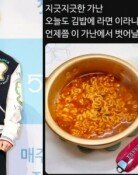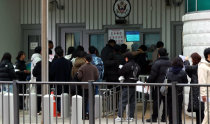Students Visit the Dong-A Ilbo Newspaper Museum
Students Visit the Dong-A Ilbo Newspaper Museum
Posted May. 17, 2008 05:04,
How would you feel if the Japanese national flag was on this? asked the curator.
Bad! replied the children.
That is why Dong-A Ilbo reporters erased the flag, said the curator.
Eleven elementary school children listened intently to the story of when the Dong-A Ilbo erased the Japanese flag on a photograph of Sohn Kee-chung, a Korean marathoner during the time of Japanese colonial rule, at the medal ceremony. The students came from Geogeum Island in South Jeolla Province and visited PRESSEUM, a newspaper museum in the Dong-A Media Center in Seoul last Saturday.
When the curator pointed to the picture of Sohn in the article reporting his marathon victory on Aug. 25, 1936, the children were riveted.
Chang Seung-min, 12, a sixth grader at Geumsan Elementary School, said, I was told the reporters who erased the flag were taken to the Japanese colonial headquarters and harassed. I think they were very courageous.
The newspaper museum displays 100 years of Korean newspaper history from the Hansungsunbo in 1883 through to 2000 and the tumultuous modern history of Korea. It also shows the footsteps of the Dong-A Ilbo that led the Korean press in spite of oppression from Japanese colonial rule and military rule over the past 80 years.
Since the museum opened its doors on Dec.15, 2000 a total of 344,045 visitors have made their way there. Last year 68,121 people visited, up 35 percent from 2006.
Increasingly more young people from kindergarteners to college students are visiting the museum, as are families. Many foreigners visit as well.
On Friday, a day before the printing of the 27,000th issue of the Dong-A Ilbo, Gregory Limpens of Belgium, 32, a student at Yonsei Language Institute, visited the museum and said, I came here to prepare for a discussion about freedom of the press at my language institute. I was told that the Dong-A Ilbo fought for freedom of the press.
Some visitors are even inspired to dream of their own future after learning the history of the Korean press.
Around 30 college students of a Media and Society class at Myoungji University visiting the museum showed deep interest in the blank advertisement scandal in 1974-1975 and in the reporters who covered the democracy demonstrations in the 1980s when tear gas and petrol bombs were commonly used to control protesters.
Min Kyung-in, 19, a North Korea major, read the blank advertisement on Dec. 26, 1975 carefully, saying, I hope the Dong-A Ilbo always keeps monitoring and criticizing the powers that be and I hope to become such a reporter, too.
gaea@donga.com







